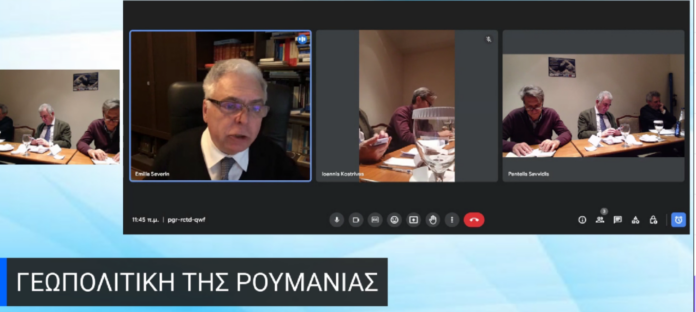(ROMANIA – A GEOPOLITICAL CONCEPT / ROMANIA’S ROLE IN THE CURRENT REGIONAL GEOPOLITICAL CONTEXT)
 Prof. Dr. Adrian Severin
Prof. Dr. Adrian Severin
Minister of Foreign Affairs of Romania (1996-1997)
Talking points
- THESIS AND ANTITHESIS RELATING TO THE GEOSTRATEGIC IDENTITY OF ROMANIA
- Romania was conceived at birth (1859) as an obstacle to Russian expansion. That is why, at the Congress of Paris (1856), the Romanian territories from the mouths of the Danube, previously occupied by Russia, in the process of its expansion towards the Balkans and Central Europe, were returned to Moldova, from where they became part of the United Romanian Principalities. This also explains why, after the union of these principalities, also known as the Danubian Principalities, the capital of Romania did not remain in the north-east of the country, in Iasi, near the Russian border, but was established in the south, close to the Danube. in the vicinity of the Ottoman Empire. Then and now, the Ottomans were favored over the Russians. This is how we arrived at “Romania – Danubian state”. Europe entrusted Romania, in the middle of the 19th century, when it emerged as a national state, with the role of guardian of the mouths of the Danube, at that time a main gateway to the heart of the continent.
- From a geographical point of view, Romania is not located on any of the main passage corridors from the West Euro-Atlantic to the East-Eurasia, or from the North Baltic to the South Mediterranean. These corridors pass either through the south of the Danube, i.e. through the south of Romania, or through the Pannonian plain, i.e. through the north of Romania. The corridors with a north-south orientation also bypass Romania, either to the east, through the Russian steppe, to reach the Black Sea or the Caspian Sea, or to the west, through the Hungarian desert or the Mazurian plains. The settlement of Romania around the citadel of the Carpathian Mountains, which even today is not crossed by convenient traffic arteries, makes its crossing difficult. No major invasion, regardless of which side it came from, had the gateway to Romania. Hence, the second geopolitical identity thesis: “Romania – flank country”. The powers that wanted to control Romania did so either to protect their flanks or to harass the opponent by threatening their flank.

3. At the Berlin Congress (1978), at which Russia, with the competition of the main emerging power, the German Reich, was repressed in the Concert of European Powers, Romania was seen both as a buffer state capable of stopping the expansionist temptations of the three old women European empires – Czarist, Habsburg and Ottoman – keeping them apart from each other, as well as a middle power of Christian religion able to hold the strategic balance in the Balkans, so as to prevent the exploding of the south-eastern European powder keg. As its explosion was seen, when it took place, it broke the windows of the palaces in all the great European capitals and beyond. In this context, the thesis appeared “Romania – Balkan state” (although technically it belonged to the Balkans only through the territory of Dobrogea, its only part south of the Danube), doubled by the thesis “Romania – Byzantium after Byzantium” or “successor of the second Rome”. Romania’s involvement in the two Balkan wars, gloriously ended by the Peace of Bucharest, showed the world that Romania can build regional order, even despite the opposition of the great European powers.4. At the beginning of the First World War, during the years 1914-1916, Romania’s dilemma regarding which camp to join was related to the clarification of its geopolitical identity: “(pseudo)Balkan state” or “Central European state”. Entering the war on the side of the Entente, Romania chose, also playing the card of its Latinity, to be a Central European state, and thus opted to join Western civilization. Paradoxically, however, she remained Orthodox. “Romania – a Latin country of oriental denomination”.5. After the First World War, which he technically lost on the battlefield, Little Romania became Great Romania, Danubian Romania became Carpatho-Pontic (that is, geographically located on the territory between the Carpathian Mountains and the Black Sea), and Balkan Romania became Central-European Romania. At the Versailles Peace Conference, the victorious imperial nations (France, Germany, Great Britain and even the USA) decided that a Greater Romania was needed to prevent the revanchism and revisionism of the old fallen empires (Czarist, Habsburg / Austro-Hungarian, Ottoman, German). In 1919, by occupying, even without the approval of the Western powers, Budapest, and thus extirpating the Bolshevik regime of Bella Kuhn and stopping the Bolshevization of Europe, Romania once again showed its ability to play a regional leadership role with continental relevance. This is how we arrived at “Carpatho-Danubian-Pontic Romania”.6. In the following period, Romania played an important role in the construction of the new European order, apart from being a champion of the League of Nations, having a prominent role in the adoption of the Montreaux Convention, regarding the regime of the Black Sea straits. Thus, Romania established itself as a protagonist in the strategic region of the Black Sea, becoming “Pontic Romania”.7. Created as a barrier against Russian expansionism and then against Hungarian revisionism, Romania had two geostrategic fears in its foreign policy: the fear of Russia and the fear of Hungary.
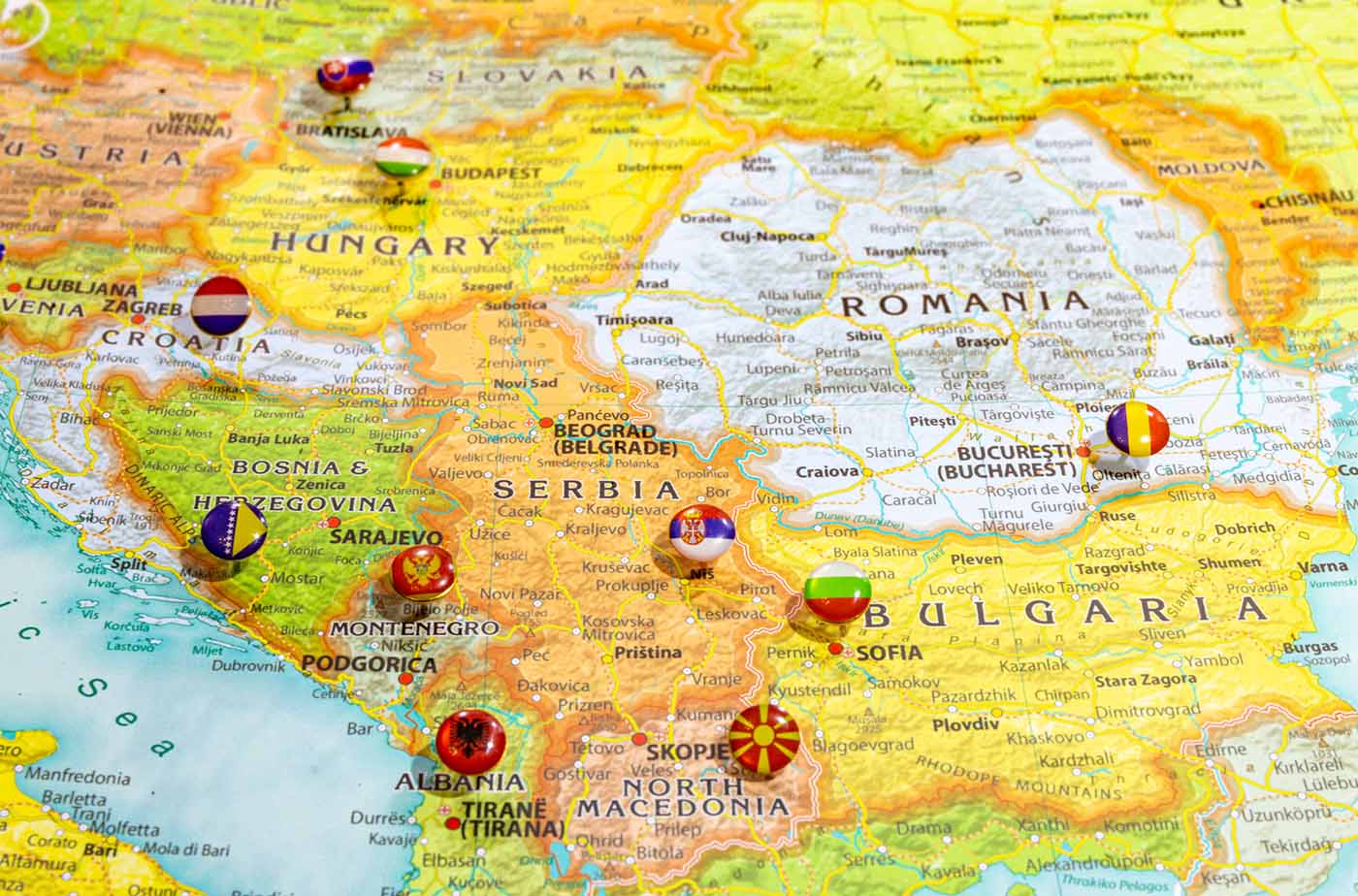
These two fears pressed for over a hundred years on Romania’s geopolitical conception, explaining many of its weaknesses, some of its conceptual rigidities and a certain almost dogmatic conservatism that made it miss numerous historical opportunities.8. The Second World War, also lost by Romania, led to the emergence of the bipolar world order. Romania then entered the sphere of influence of Soviet Russia. There, however, she was the “inventor” of the so-called “national-communism”, a doctrine that allowed her to achieve a certain strategic autonomy and, in its logic, a multi-vector foreign policy. Thus, Romania became the most non-aligned among the aligned countries and the most aligned among the non-aligned countries. In this context, however, its natural geopolitical assets had few opportunities to fully express themselves. Romanian geopolitics was then more tactical than strategic, the almost unique objective being the preservation of its independence regardless of the conditions. Independence and sovereignty were the goal, not the means, of its assertion as a power with its own conception of the regional and world order. Romania then had its own speech regarding the world order, but the speech was not served by independence to materialize but was meant to safeguard its independence.9. In the context of the bipolar order, two other older fears of Romania were accentuated: the fear of isolation and the fear of domination. Romania did not want to remain alone in front of its potential adversaries, but neither did it want to remain at the discretion of its stronger “allies” wishing to dominate it.10.

The geopolitical conception of Romania was influenced not only by geography, but also by history, with its ethno-cultural dimension. Romania was a political project. This project was successful and endured because it had a solid cultural base. This rested on two pillars: language unity and confessional unity; the Romanian language (without dialects) carried by shepherds on both sides of the Carpathians, up to the Danube, Dniester, Tisza and the Black Sea, on the one hand, and the Orthodox Church, born from the people and not imposed by princely decree, on the other . That is why Romania is still resisting today, despite the dismemberment projects that have accompanied its entire modern history and are still in force today.11. Under these conditions, the sui generis character of Romanian nationalism is also explained. This is a geostrategic nationalism, not an ethnic one. A culturally based political project has made Romanians not interested in asserting their cultural superiority, but in seeking their national security, accepting integration into the more comprehensive Western civilization all the more easily as long as they do not renounce their national traditions. They are preserved without nationalistic ostentation and reappear when people least expect it.12. The collapse of the bipolar world order put Romania in a position to adapt to the unipolar order spontaneously installed after the end of the Cold War – the so-called pax Americana. It made her aware that such an order was not in accordance with her interests and assets. For Romania, objectively, the only convenient order remains the multipolar one.13. Anticipating the end of the unipolar order, as well as the challenges brought by the disorder that would follow unipolarism, in the mid-1990s, Romania developed a foreign policy doctrine based on its geopolitical assets and intended to capitalize on them by fulfilling its regional role recommended by those assets. This doctrine remains valid even today, even if, since the beginning of the 2000s, it was gradually but consistently abandoned in order to completely subordinate Romania to the geopolitical agenda of the USA (and less of the EU, which, by the way, is an entity in strategic identity crisis).
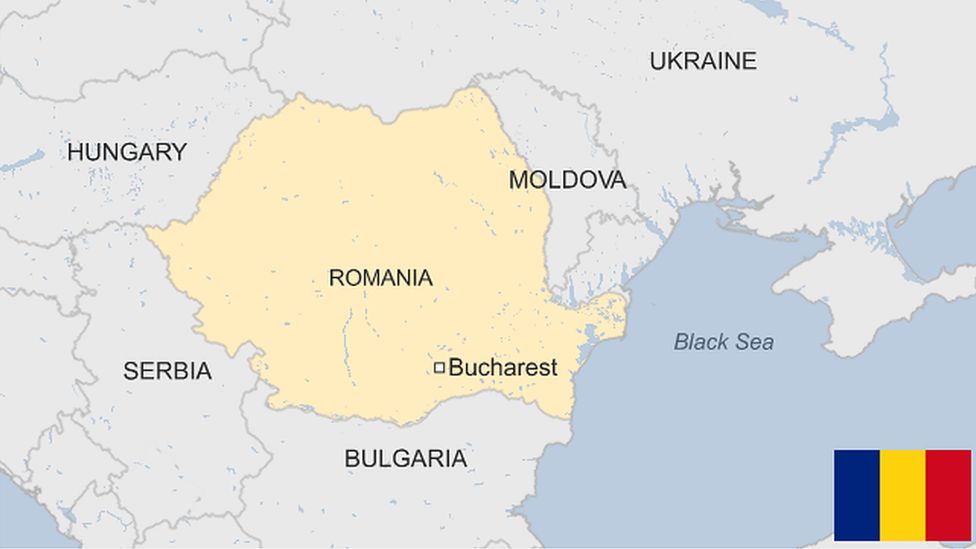
II. ROMANIA’S FOREIGN POLICY BETWEEN 1990-1998 A. Changing international context
1. The data according to which Romania had to act in the early 1990sa) the agreements in Malta – the de-ideologization and demilitarization of international relations and the reunification of Europe;b) the disappearance of the USSR – “the greatest geopolitical catastrophe of the 20th century”; post-Soviet disorder and the problem of “frozen crises” (components of a coherent post-imperial crisis)c) German unification – the preamble to the transition from European Germany to German Europe;d) the spontaneous transition from the bipolar world system to American unipolarism (victoria pax americana) – from the “balance of terror” to the abuse of power;i. the ability to abuse its power, in the absence of a formidable opponent, has affected American political discernment, analysis, and planningii. external de-ideologization triggered internal ideological conflicts that then infected American foreign policye) the reawakening of the imperial instincts of the nations of Western Europei. from the reconciliation of European history with European geography and the reunification of Europe, to the expansion of the EU in the post-Soviet “wild east”ii. the objective of emancipating Europe (German or Franco-German) from tutelage (American domination and occupation) – which required a Euro-Russian entente;f) the alignment of the non-aligned and the political reorientation of Third World markets.2. American confusion between:a) the armistice proposed by the USSR and the capitulation of the USSR;b) the victory of the values proclaimed by pax americana and the victory of the USA3. The post-bipolar history of Europe as an opposition of two strategic conceptions, namely:a) “America in; Russia out; Germany down!”b) “America out; Russia in; Germany (German Europe) up!”
B. Romanian-sceptic prejudices and geopolitical threats
1. Two Romanian-skeptic Western doctrines:a) the geopolitical conflict – “A Romania too big for a Europe too small / A Romania too strong for a Europe too weak”b) the cultural conflict – an Orthodox Romania on the Carpathian border with the collective Catholic, Protestant and Neo-Protestant West2. Three immediate political threats:a) promoting European integration policies in contradiction with Romania’s development policies (on the basis inherited from the previous political regimes)b) the territorial dismemberment of Romania by starting inter-ethnic conflicts (the events at Tg Mureș in March 1990)c) the decoupling of Romania from the countries of the Viszegrád Group3. Romanian-skeptic theses in the post-Soviet / post-bipolar propaganda wara) Neo and crypto-communist Romania / unreformed Romania (including the lack of a reformed communist party) – anti-monarchism; authoritarianism (the University Square phenomenon); hyper-statism (refusal of privatization); hyper-centralism (rejection of decentralization, including local autonomy based on ethnic criteria, with the corollary of hyper-bureaucracy); militarism (military leadership of civilian institutions); anti-reformism (rejection of “shock therapy”)b) Archaic Romania – autochthonism and clericalism
C. Anti-Romanian policies of international neoconservative and corporatist circlesa)
Opposition to the hypothetical reunification of Romania in the east (reunification with Bessarabia / Republic of Moldova)b) Support for the territorial destructuring of Romania in the west. (the problem of Transylvania)c) Opposition to policies supporting the emergence of Romanian private capital.d) The pressure in favor of “shock therapy” (unlike in the case of Poland, it was a “shock without therapy”) and “restitutio in integrum” (the privatization of branches strategic economic benefits in favor of foreign corporations)e) External support for the creation of militant political NGOs, with occult funding and (external) dependencies, fueling internal political instability
III. THE PHASES OF THE ROMANIAN FOREIGN POLICY FROM 1990 TO 2023
a) 1992-1996 – a mimetic and reactive policy, of approximation, groping and balance between “old friends” and “new friends”, in the context of the beginning of the expansion of the Euro-Atlantic West towards the Euro-Asian East;b) 1996-1998 – a multi-vector, anticipatory and offensive policy, which would ensure Romania a regional leadership role in Eastern and South-Eastern Europe, with security guarantees outside the Western alliances, under the conditions of reconciliation between (Euro-Atlantic) integration and independence;c) 1998-2000 – Russophobic, American-skeptic, Germanophile and Euro-compliant politics, in all its aspects moderate and adynamic;d) 2000-2007 – the policy of the unidirectional national consensus of Euro-Atlantic integration (“rush to the collective West”), seen as an end in itself and not as a means (and therefore achievable at any price);e) 2007-2023 – de facto abandonment of sovereignty with the effect of self-deprivation of any foreign policy (colonies and protectorates – generally state entities lacking sovereignty – have no foreign policy).

IV. THE FOREIGN POLICY DOCTRINE OF ROMANIA IN THE YEARS 1996-1997 1. The doctrine of the “three concentric circles” – neighbors, regional powers, global powers; the basic elements of the “three circles” doctrinea)
The “reconciliation” strategy – interethnic, interconfessional, historical (between the republic and the monarchy), international (with neighbors)b) The strategy of building strategic partnerships in bilateral, trilateral and quadrilateral format with the states in the immediate and close neighborhood (Poland, Ukraine, Republic of Moldova, Hungary, Austria, Bulgaria, Greece, Turkey, Croatia, Serbia / Yugoslavia, Slovakia), all intersecting in Bucharest, to grant their members:- the ability to obtain security outside alliances with regional and global powers;- the ability to provide security to regional and global powers, under conditions of advantageous reciprocity;- the ability to negotiate with regional and global powers, from positions of superior strength and efficiency, integration into the security structures created by them;- the ability to be usefully inserted into the regional strategies (Balkans, Black Sea, Danube) of the global powersc) Romania as a regional leader, a member of the informal international network of regional leaders and a strategic partner of strategic partnersd) Establishing regional strategic partnerships with Germany and Italye) Establishing global strategic partnerships with the US and Chinaf) “Silk Road” (South Caucasian route), “Amber Road” (from Gdansk to Alexandropolis) and “Southern Road” (from the extended Middle East to the Persian Gulf)
2. Map of the main resistance structures of the security architecture designed by Romania in its immediate and close neighborhood – Central, Eastern and South-Eastern Europei.
The Romania-Hungary quasi-confederal partnershipii. The in-depth partnership Romania-Polandiii. The Romania-Moldova-Ukraine-Poland quadrangleiv. The “back to back” trilaterals Romania-Bulgaria-Greece and Romania-Bulgaria-Turkeyv. Trilateral Romania-Hungary-Austriavi. Trilateral Poland-Romania-Turkey
3. The principles and strategic objectives of Romania’s international relations
a) The basic political treaty with Ukraine – objectives (in descending order of importance at the date of their conclusion)i. Protection of the Romanian communities in Ukraine (endowing Recommendation 1201 of the PACE with legal force and including the rights conferred by treaty on the Romanian minority in, including through the creation of the Euroregions Lower Danube and Upper Prut (Northern Bucovina and Hotin)ii. The creation of the premises for the realization of the strategic trilateral Romania-Ukraine-Poland (which also meant the proximity of Romania, through Poland, to the Viszegrád Group, the favorite of the collective Western powers)iii. Achieving the conditions for the recognition of Romania’s rights over the continental shelf of the Black Sea.iv. Fulfilling the conditions for Romania’s entry into NATO and the EUv. Obtaining the right of navigation on the internal waters of Ukraine (Chilia branch)vi. Obtaining a buffer space between Romania and Russia under the conditions of a certain balance of power between Ukraine and Russiaare you coming. Finding a first-rate strategic object of the cooperation between Poland and Romania, of maximum interest for the USA and the EU, consisting in the anchoring of Ukraine, through the coordinated effort of the two, in the West European geopolitical soil (with the perspective of bringing Romanians from Ukraine, with the inhabited territories by them, in the EU) – this was supposed to take place under the conditions of improving relations between the collective West (especially the EU) and Russia, as well as the federalization and finnishing of Ukraineviii. Countering accusations that Romania is a revisionist state (revision of the 1947 Paris Peace Treaty) and irredentist (claiming the territories assigned to Ukraine by the peace treaty at the end of the Second World War).
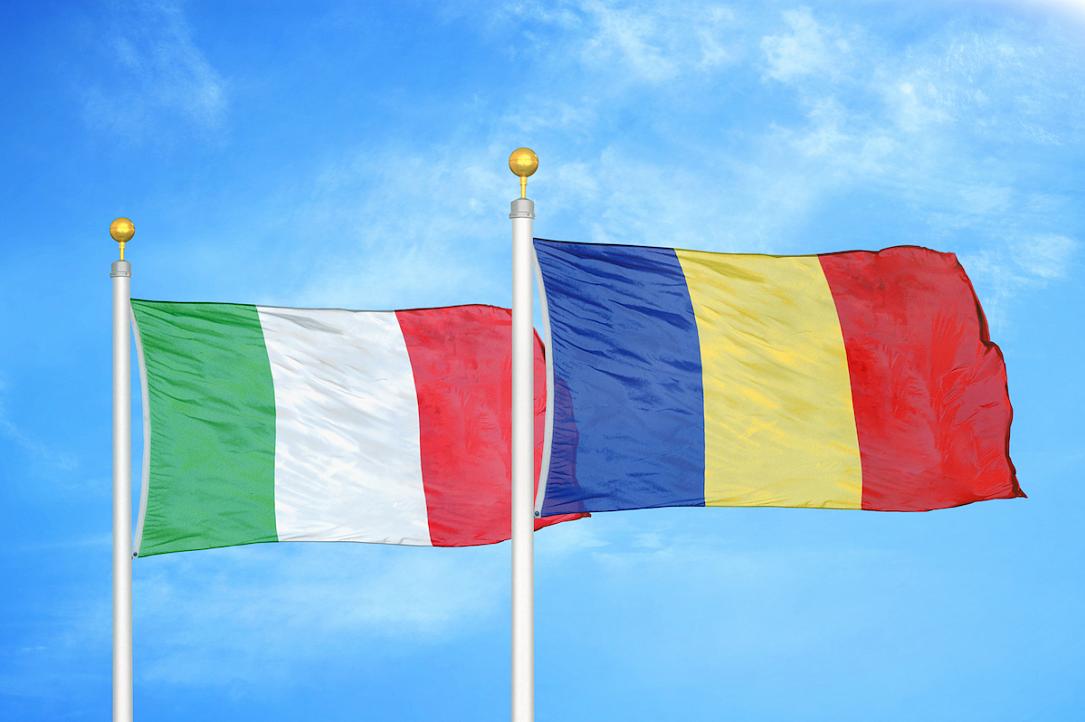
b) Romania’s strategic partnership with Italyi. an actor with regional (European) relevance, equally privileged partner of the USA and Russia, member of the G7 and founder of the EU, with a vocation to a permanent member position in the UN Security Council;ii. Italy had cultural affinities with Romania;iii. Italy was Romania’s springboard towards the creation of a “Latin European Pact” (France, Italy, Portugal, Romania, Spain) as a bridge to a special relationship with Latin American states (MERCOSUR and the Andean Pact)iv. N.B. The strategic partnership with Germany could not be realized, and other so-called “strategic” partnerships with different European states (e.g. France), proclaimed by different Romanian governments, are false because they lack the congruence of strategic interests. That’s why they never worked. c) The principles and objectives of Romania’s strategic partnership with the USAi. The principles provided for in the founding document agreed in Bucharest in October 1997: communication; consultation; concertation; cooperation – in all areas of strategic interest, specifying that, at the time of its birth, the partnership was not considered a substitute for Romania’s entry into NATO and did not include a military component in the strict sense)ii. “Romania prefers to become a member of NATO as a partner of the USA, than to become a partner of the USA as a member of NATO.” – SA statement in Washington (April 1997)iii. The option for the alliance with the sole global superpower of the 1990s provided that:- Russia had no strategic offer for Romania (nor could it have in the years 1990-2014), preferring direct agreements with the USA and the EU- Romania advocated for the US to remain a “European actor”, being the only one capable of providing Europe with the nuclear security umbrella in relations with third parties and at the same time imposing on the European powers the avoidance of war between them- Romania was interested in and had in mind in the medium term the realization of a multipolar world order whose main pillars would have been the two hard powers of the former bipolar order, now in decline – the USA and Russia, and the two emerging soft powers –
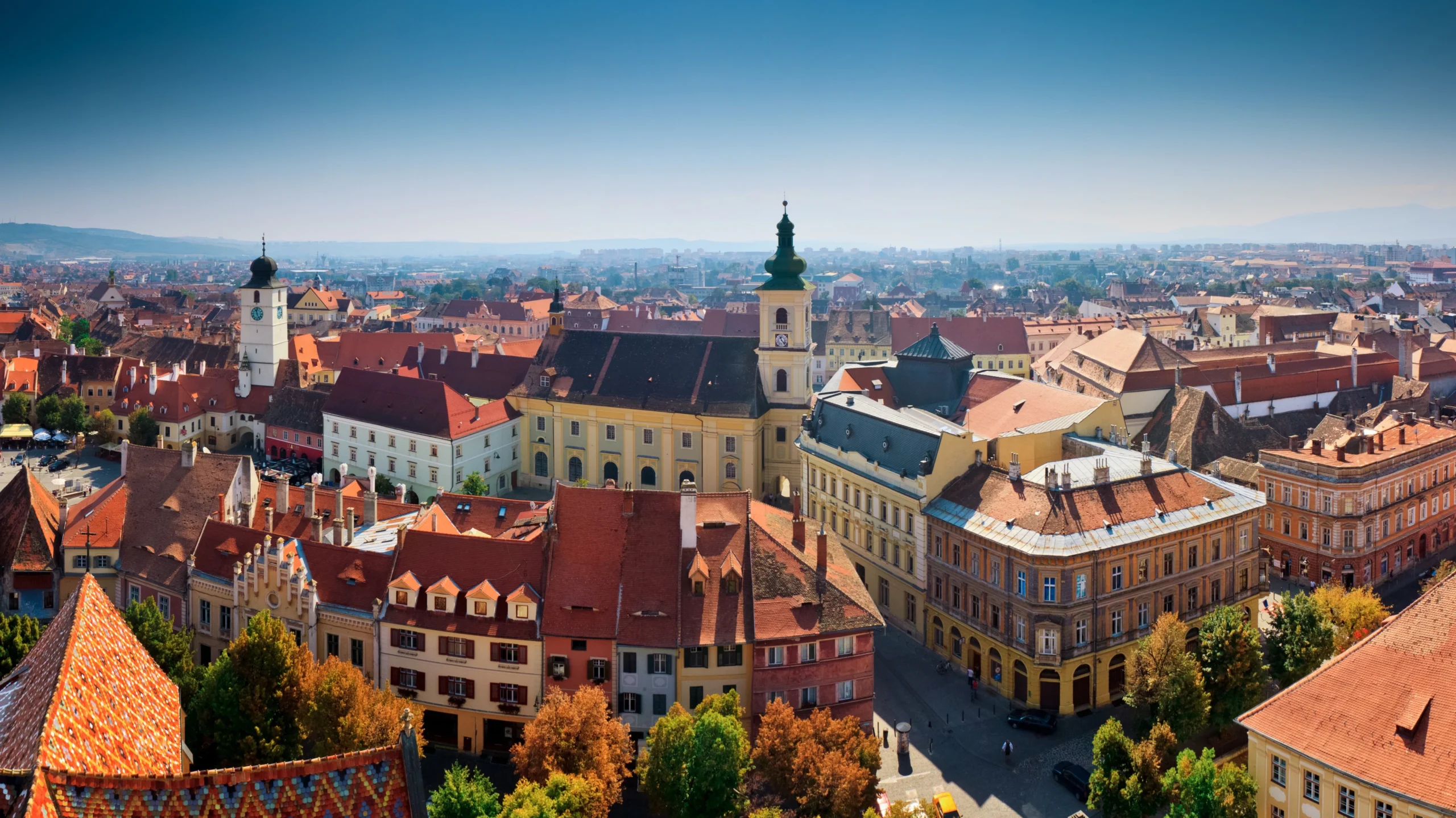
China and the EU.- Romania supported the idea of creating a European defense capacity (within the EU) in strategic connection with the US, but capable of acting autonomously when US participation was not necessary or possible. d) The principles and objectives of Romania’s strategic relationship with Chinai. Recognition of the objective nature of the Romanian-Chinese bond based on the solidarity of their strategic interests, independent of ideologies, political regimes and governments.ii. Recognizing the need to include China in a system of symmetric multipolar globalism (the dynamic balance of the main powers together with the alliances made by them is the guarantee of the durability of the order created by the system) which ensures the stability of the world order.iii. Capitalizing on China’s economic and commercial potential, as well as the traditions in Romanian-Chinese bilateral relations that have the potential to make Romania China’s gateway to the EU (in the meantime, Romania has been replaced in this function by Hungary).e) The principles and objectives of Romania’s relationship with Russiai. Economic cooperation, including regarding the strategic South Stream project (Russian gas pipeline crossing the Black Sea and Romania to Central Europe)ii. Avoiding a German-Russian agreement that would resume the Ribbentrop-Molotov Pact (in this sense the trilateral Romania-Ukraine-Poland had to be used)iii. iii. Avoiding an American-Russian agreement that overshadows Romania (in this sense, the Romanian-American strategic partnership had to be used)iv. Creating the necessary framework, under the conditions of a friendly Romanian neighborhood, for the clarification of some litigious aspects from the past of Romanian-Russian relations (the treasury problem, the problem of Bessarabia/Moldovenism and the problem of the reactivation of the Metropolis of Bessarabia) f) The principles and objectives of joining NATOi. Romania to strengthen its defense capacity against any third party aggressor, without its membership in the alliance being directed against a third party, directly or indirectlyii. Romania as an equal member with all other members (rejection of the idea that a priori Romania should not host military bases or NATO weapons)iii.
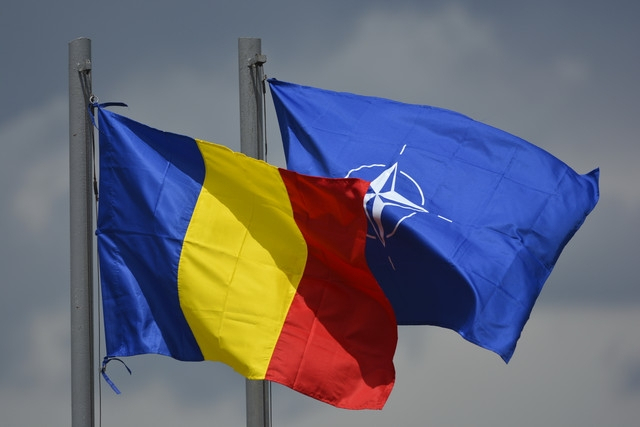
The alliance should allow the development of its own defense capabilities without foreign troops being stationed on Romanian territory or weapons of mass destruction being stored.iv. Romania to be placed in the same political-military alliance with Hungaryv. Romania to offer a stable and safe neighborhood to Russia, from the position of which it can develop a rational and positive relationship with Russiavi. Consolidating Romania’s security to offer it credit on the financial and capital market, facilitating its entry into the EUg) The principles and objectives of entering the EUi. Romania’s entry into the EU as part of the European reunification process, a consequence of the reconciliation between Europe’s geography and history – the refounding of the EU and Romania, alongside the new members from Central and Eastern Europe, as a co-founding member of the EUii. The enlargement of the EU as a process of synthesis of the history and culture of the old and new members, and not as a process of colonial / imperial expansion of the European West into the territories of the European Eastiii. Entering the EU as a solution for overcoming the crisis of the national state and strengthening the Romanian nation-state under the conditions of the exercise of national sovereignty by delegating (not ceding) some of its attributions simultaneously to transnational institutions and local communities – Europeanization and decentralizationiv. The organization of the EU as a union of states and citizens operating on a federal basis as a transnational (not supranational) democracy mandated by member nations to manage their common interests, through institutions jointly created and under common democratic control, for common benefit – “the United States of Europe’ as a sui generis federation of sovereign nation-states; sovereignty and federalism were to be reconciled in the EU.v. Promoting the national interests of Romanians consisting in obtaining individual (personal) and collective (social), national (identity) and international (geostrategic) security – peace, well-being, freedom, dignityvi. Achieving the objective of national reunification by bringing together all Romanian historical territories, with the Romanians who live in them, within a single political structure – the European Union 4. The relationship with the Republic of Moldovai. The doctrine of the two Romanian statesii. The doctrine of union with Bessarabia within the EUiii. The strategy of joining at the base:- Metropolis of Bessarabia;- the training of the Moldovan clergy in the theological education institutions in Iași;- training young Moldovans in political and administrative sciences;- standardization of administrative forms;- the purchase of Moldtelecom;- Romanian credit for the purchase and completion of one of the groups of the Cernavodă Nuclear Power Plant;- making the European gauge;- assistance for training and equipping the Moldovan armyNB – some remained in the draft stage, and others were abandoned along the way
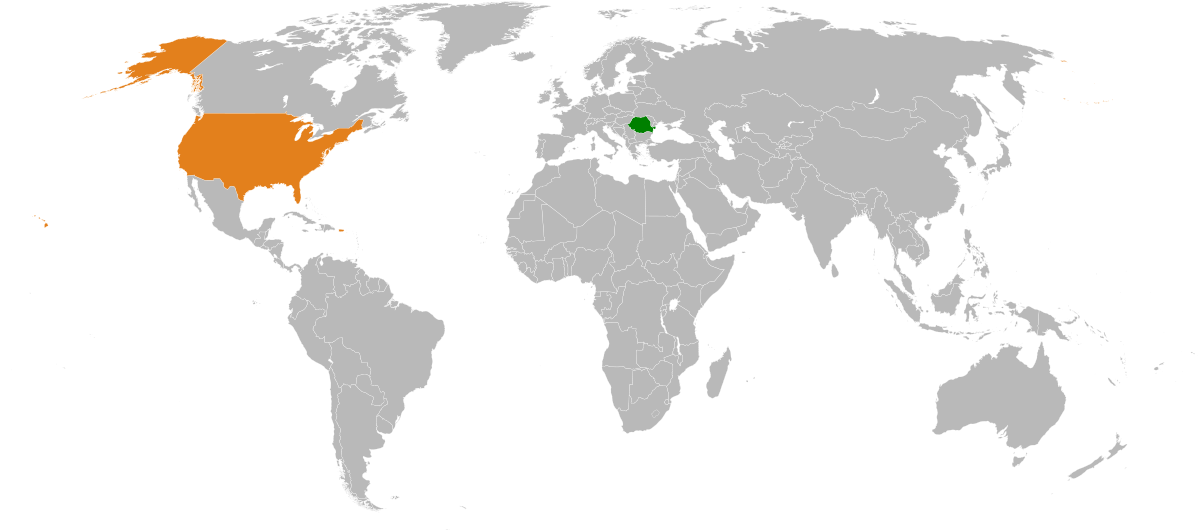
IV. EXTERNAL REACTIONS TO ROMANIA’S FOREIGN POLICY DOCTRINE
1. US positioni. Major interest in concluding the Treaty with Ukraine and the trilateral Poland-Ukraine-Romania, under the Brzezinski doctrineii. Interest in back-to-back Romania-Bulgaria-Turkey and Romania-Bulgaria-Greece trilaterals, as a way to help maintain a non-conflictual relationship between Turkey and Greece, two US NATO allies (the State Department created a collective that to study this form of “trilateral diplomacy” promoted by Romania)iii. Reluctance towards the idea of raising Romania as a regional leader and towards that of the emergence of a central, eastern and south-eastern European mini-bloc outside the US-controlled alliancesiv. Rejecting any suggestion of US or NATO negotiations with the ex-communist states in the bloc – the thesis of assessing each one on its own merits (see “Sintra principles”) 2. Germany’s positioni. Opposition to a policy of creating a Central-Eastern European bloc of states that could find out and negotiate their security together – Germany sought to fragment Mittel Europe in order to more easily control and trade with it, especially with Russiaii. The privilege of the member states of the Viszegrád Group, in general and especially in relations with Romaniaiii. Opposition to any revival of the intermarium project that would have risked erecting a roadblock that would make it difficult to return to the Ribbentrop-Molotov Pact strategy3. The position of Francei. Before German reunification he was ready to offer Russia a Greater Hungary in exchange for opposition to the unification of East and West Germany.ii. After the German reunification, he saw in the Romanian “sister” the outpost of France in Eastern Europe and on the Black Sea, in the immediate / close vicinity of Russiaiii. Opposition to the Romanian foreign policy doctrine that favors the strategic partnership with Germany, and not with France, in the context of the strategic approach to the USA4. The position of Russiai. Until the orange revolutions, Russia’s priority was to associate with the collective West in order to delimit the spheres of influence in Eastern Europe together with it (with Romania placed on the Russian road towards the Slavs and the Orthodox in the Balkans)ii. Opposition to any attempt to move Ukraine towards Western alliances and therefore fueling tensions between Romania and Ukraineiii. The lack of a personalized offer for Romania in terms of security, associated with assuming the idea that Romania did not represent a danger similar to the Polish or Baltic ones, and that it would remain in a constructive relationship with Russia, even under the conditions of joining NATO and the EU
V. THE SERVIAL ALIGNMENT OF ROMANIAN FOREIGN POLICY TO THE EURO-ATLANTIC AGENDA AND THE RESIGNATION OF ROMANIA’S GEOPOLITICAL IDENTITY.
1. 1998 – The defeat of the Romanian political-diplomatic counter-offensive against the strategy of foreign powers to take over the leadership of Romania through local agents and annex its foreign policy to their geostrategic priorities2. 1999-2000 – Subordination to German demands (the policy of relations with neighbors became an annex of the geopolitics of global powers)3. 2000-2004 – Gradual subordination to American demands4. 2000 -2024 – The doctrine of the “Great Firefly” – the doctrine of the surrender of national sovereignty.
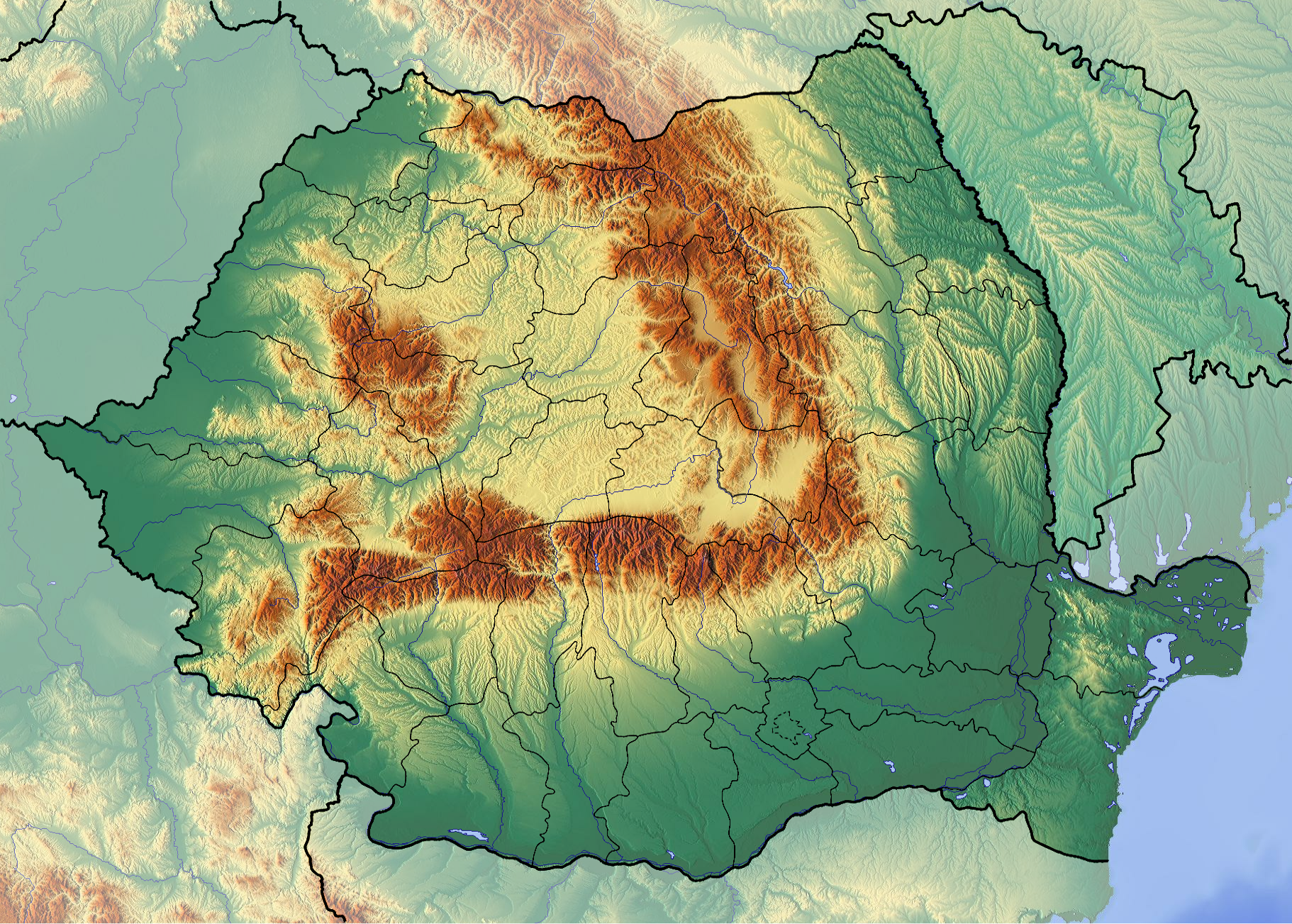
VI. CURRENT ROMANIAN GEOPOLITICAL OBJECTIVES AND ALTERNATIVES(The margin of freedom and Romania’s options in the current geopolitical context)
1. The need for Romanianization of Romanian foreign policy; the premise is the recovery of sovereignty – colonies, protectorates and trust territories have no foreign policy 2. Re-examining and resetting alliances – current alliances should not be abandoned but it should be made clear that they cannot last if they compromise our national interests. a) Partnership with the USA – return to initial principles – “the four Cs” b) NATOi. Romania must ensure the maintenance of the defensive political-military alliance character.ii. NATO can globalize but only within the framework of a global defensive Pact.iii. NATO should help Romania to consolidate its military strength, instead of occupying Romania with military forces belonging to other member states and thus transforming Romania into a first line target.iv. NATO should bear the cost of its presence in Romania from its own budget and not from the Romanian budget.
3. Relations with (near)neighborsa)
The partnership with Hungary – must be reinvented based on the principle of synergy between the foreign and security policies of the two states b) Partnership with Poland – redefined common strategic interests and created a mechanism for current cooperation c) The relationship with Serbia – rehabilitates the former cordial antante based on the solidarity of their national interests. d) The relationship with Ukrainei. Romania is not interested in a Greater Ukraine, hypercentralized, militarized and authoritarianii. Romania is not interested in a dysfunctional and unviable Little Ukraineiii. Ukraine (what will remain of it after the war with Russia) must be de-Soviet, self-determined on the national principle (if applicable), federal, neutral and a member of the EU. e) The relationship with Turkey – a consolidated partnership, similar to the one built by Hungary, which would make the Bucharest-Ankara binomial a factor of stability both in the Black Sea and in the entire Balkan peninsula, in synergy with the Romania-Bulgaria-Greece partnership. f) The relationship with the Republic of Moldova – economic integration, political association, legislative unification, institutional harmonization, European integration, cooperation in regaining national consciousness; Moldova must choose between being Stefanian or Stalinian and between Europeanization and Transnistrianization.
4. Relations with regional and global powersa)
Relations with Russia – normalizationb) The relationship with China – strategic partnershipc) The relationship with Indiad) The relationship with Irane) The relationship with Saudi Arabiaf) The relationship with Israelg) The relationship with Egypt
5. Relations with the EU
(in context, with the Group from Viszegrád and with the first founders of the European Community – Germany, France, Italy)a) EU reform along the lines of the agreement between sovereignty and federalism, with the strengthening of democratic legitimacyb) Creating a group of states with converging visions and interests within the EU, in the EU neighborhood or in a mixed formula, from which Romania can influence EU policies or promote alternatives to them
6. Relations with international political organizations – UN, OSCE, Council of Europe – rehabilitation, updating and reinvention
7. Relations with international funding organizations – democratization / deoligarchyzation.
8. Romania’s position towards the crisis of international law
– the updating of international law according to the current structure of the balance of power and the configuration of the current contest of interests, on a consensual basis and with the removal of the unilateralist concept expressed in the formula “international order based on rules”.
9. Romania’s position towards the reform of the world order
– instead of unipolarism, a multipolar order whose stability is guaranteed by the balance of power circles, circles that have a variable composition depending on the interests of their members in the realization of common projects.
Mr. Severin’s speech at the Geopolitics Conference in Thessaloniki



